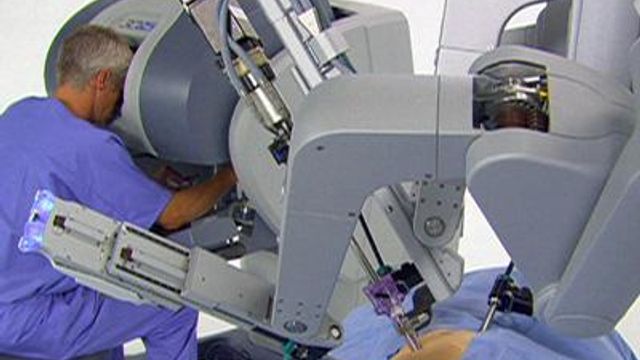Robotic surgeries benefit women
Surgeries are the last option for women with heavy menstrual cycles. But robotic tools are increasingly available in major and community hospitals across the country.
Posted — UpdatedBut robotic procedures that keep patients off their feet for only days are increasingly available in both large, major and smaller, community hospitals across the country.
About a year ago, Cheryl Hanchock, a 34-year-old mother of two boys, decided she had suffered enough from a benign fibroid tumor.
"I was having problems bleeding and cramping and things of that nature every month," Hanchock said.
Obstetrician Dr. Jack Inge offered to let Hanchock become the first woman at Rex Hospital to have a robotic hysterectomy.
For women who want to still be able to have children, a robotic myomectomy is possible. "Just remove the fibroid, and that way you preserve the fertility, so that you can be able to have children," Inge said.
DaVinci surgical robots, which are being used in wider variety of procedures, make possible such uterine procedures.
The doctor performs the surgery at a control console, while the patient lies several feet away, underneath robotic arms. The surgeon sees inside the body through three-dimension, high-definition video.
Inge said DaVinci's instruments maneuver better than labroscopic ones; the tools mimic the movement of his fingers and wrist.
Together, the camera and surgical arms need only four pencil-sized holes in the patient' s body – rather than one large incision usually inflicted for surgery.
Hanchock said she was sold on the idea once Inge explained all of its benefits.
"He explained the advantages of having robotic surgery," she said. "Healing time's a lot faster. It's a lot more precise. You have a lot less blood loss. You have a lot less wound infection."
Rather than spending three or four days in the hospital, Hanchock stayed overnight. And instead of four to six weeks of recovery time, robotic surgery requires a single week.
Even three days after surgery, Hanchock felt strong enough to walk around Wal-Mart with her family.
• Credits
Copyright 2024 by Capitol Broadcasting Company. All rights reserved. This material may not be published, broadcast, rewritten or redistributed.





